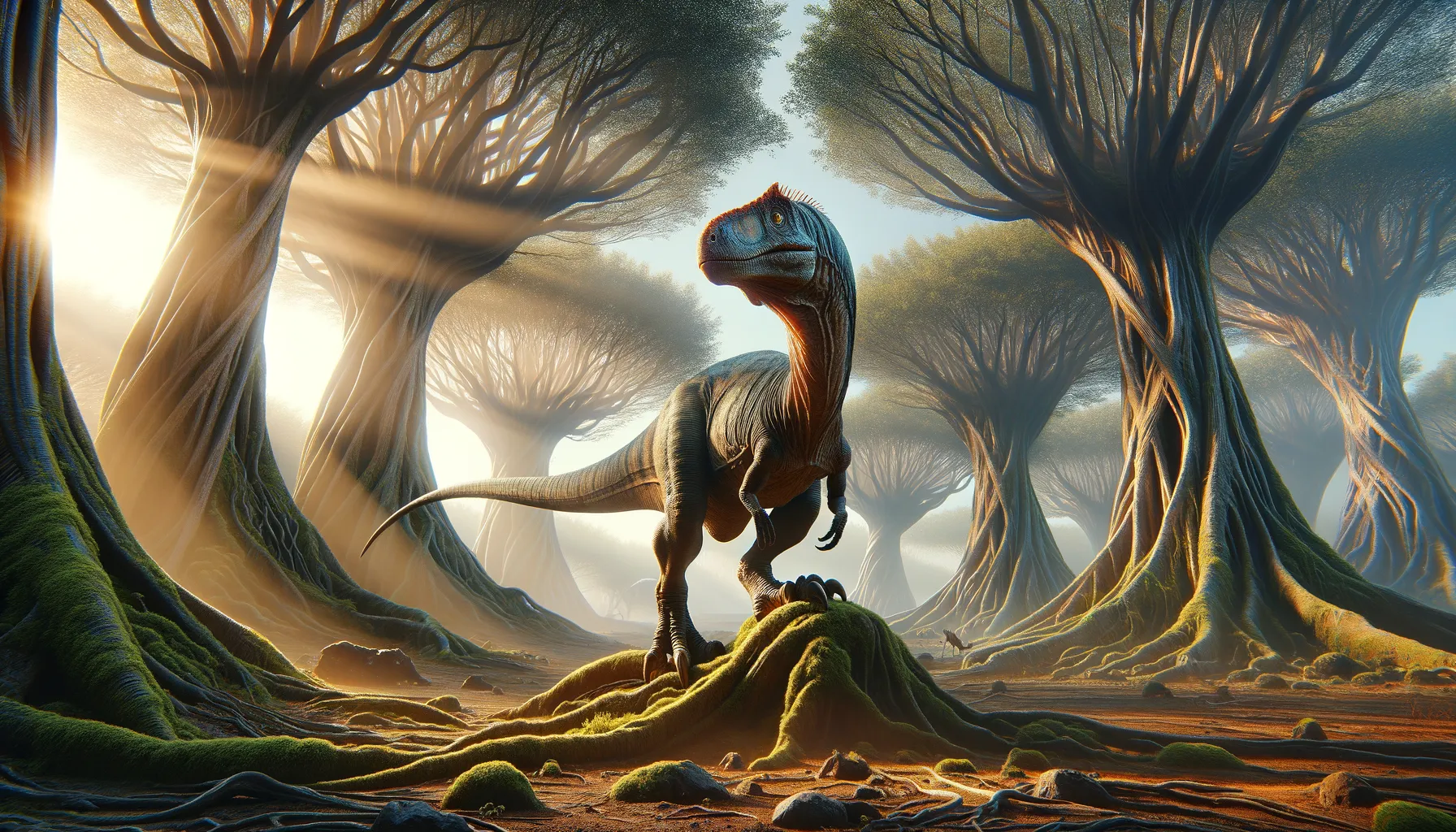
Alvarezsaurus
The little sprinter of the dinosaur world!
Period
Cretaceous
Length
About 2 meters (6.5 feet) long.
Height
Around 0.5 meters (1.6 feet) tall at the hips.
Weight
Approximately 20 kilograms (44 pounds).
Alvarezsaurus was a small, bipedal dinosaur that roamed the Earth during the Late Cretaceous period. It belonged to a unique group of theropod dinosaurs known for their long legs and tiny arms. Despite its slender build, it was an agile predator, possibly feeding on insects or small vertebrates. Its fossils have primarily been found in South America, giving scientists valuable insights into dinosaur evolution in this region.
Diet
Alvarezsaurus is believed to have been an insectivore, primarily feeding on insects. Its small size and specialized limb structure suggest it could efficiently dig into insect nests or catch fast-moving prey.
Hunting
This dinosaur likely employed speed and agility to hunt its prey. Its long legs indicate it was capable of quick movements, aiding in capturing small, elusive targets such as insects.
Environmental challenges
Alvarezsaurus lived during a time when the climate was warm, but it faced environmental challenges such as periodic changes in the ecosystem. Predation by larger dinosaurs was likely a constant threat. It also had to compete for resources with other small theropods inhabiting the same region.
Speed
Moderate speed, well-adapted for running.
Lifespan
Estimated to live around 10 to 20 years.
First discovery
Discovered in Argentina in 1991 by paleontologist José Bonaparte.
Fun Facts
- Alvarezsaurus was a small dinosaur, measuring only about 2 meters long, which is roughly the size of a large dog.
- It lived during the Late Cretaceous period, around 86 to 83 million years ago, in what is now South America.
- Despite being named after the explorer who discovered it, Alvarezsaurus itself was not a fierce predator; it was more likely an insectivore, feeding on insects and other small prey.
- Alvarezsaurus had long, slender legs and a lightweight body, which would have made it a very fast runner.
- This dinosaur belonged to a group known as Alvarezsauridae, which are known for having very small, but strong arms, possibly used for digging.
- Its name means "Alvarez's lizard," named after the historian and archaeologist Don Gregorio Alvarez.
- Unlike many of its dinosaur relatives, Alvarezsaurus had a bird-like bone structure, which shows how diverse dinosaurs were during the Cretaceous period.
Growth and Development
Alvarezsaurus, like many dinosaurs, grew rapidly after hatching from eggs. It reached its full adult size relatively quickly, likely within the first few years of life. Its development involved significant changes in limb proportions, optimizing it for fast running and active foraging.
Habitat
Alvarezsaurus resided in a diverse environment that included forests and open areas in what is now South America. This habitat provided a mix of cover and open spaces for hunting. Water sources would have also been crucial for its survival.
Interaction with other species
This dinosaur likely had to compete with other small theropods for food resources. It could have participated in avoidance strategies to minimize encounters with larger predators. Occasional interactions with contemporaneous herbivorous dinosaurs might have occurred, often related to competition at shared water or feeding sites.
Natural lifespan
In the wild, Alvarezsaurus likely lived for 10 to 20 years.
Reproduction
Alvarezsaurus reproduced by laying eggs, similar to other theropods. The nests were likely made in secluded areas to protect eggs and hatchlings. Parental care details remain uncertain, but there might have been some level of protection for the young until they could fend for themselves.
Social behaviour
Alvarezsaurus may have exhibited solitary behavior, hunting alone or in small groups depending on resource availability. It might have communicated with conspecifics via vocalizations or visual signals, although concrete evidence for complex social structures is limited.
Fossil locations
Fossils of Alvarezsaurus have predominantly been found in the Neuquén Province of Argentina. The discovery of these fossils in South America has provided critical insights into the distribution and diversity of small theropod dinosaurs in this region during the Late Cretaceous period.
